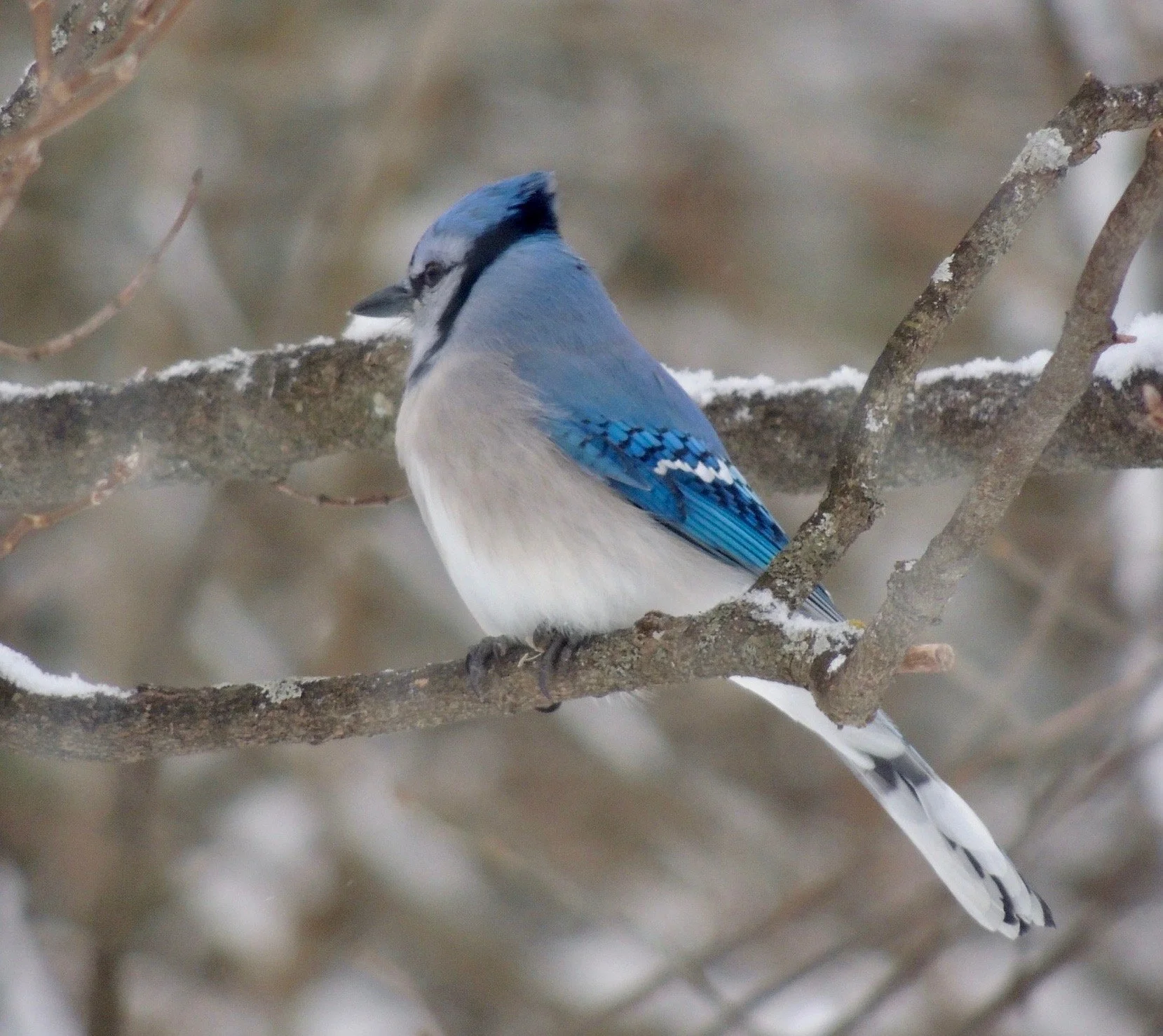Into the Woods with Curio: Memory Games
Doug Smith
I have hidden your word in my heart that I might not sin against you. (Psalm 119:11)
The other day I found a piece of bread tucked into a corner of our outdoor porch. It looked like it came from a bun I had broken up and put out for the birds the day before. But how did a piece end up in the porch? I asked Silvia if she knew anything, (she’s been known to play the occasional trick) but she knew nothing. It couldn’t have been a chipmunk, as they have gone underground for their winter hibernation. And I have never known the red squirrels to do this, though they do store as many peanuts and sunflowers as they can find. What about a blue jay? They also grab as many peanuts and sunflower seeds as possible, and find some interesting places to cache them, such as a downspout! That’s a lot of sunflower seeds, literally going down the drain!
Jays and their relatives are famous for caching food. The Canada jays, (formerly gray jays) in nearby Algonquin Park have been studied for decades for their unique method of caching perishable food, such as insects and berries, in the summer, then using these caches to survive the winter. These caches are also vital to their having an early start on nesting – as early as February!
Another relative, the Clark’s nutcracker, has also been studied for its amazing ability to not only create thousands of food caches, but find all the seeds it hoards. A resident of the western mountains, it’s a little larger than our blue jay and Canada jay, and dressed in gray, white and black, with, as its name suggests, a long, strong beak.
In a study by a graduate student of Northern Arizona University in the 1970s two captive nutcrackers were provided with a supply of seeds, and then monitored as to where they hid them in a controlled environment. Over the course of the experiment it was proven that they could find their food caches again, even when the cache sites were changed. The carefully conducted experiment proved the caches weren’t found randomly, nor by smell, but by the birds’ use of spatial memory, which allowed them to create a mental ‘map’ of each location where they had cached their food. This was with over 100 caches, though in the wild the caches of an individual bird can number in the thousands throughout its territory. When a fellow grad student went head-to-head against the nutcrackers to see who could remember the most caches, the birds won by a large margin! Of course, they had more practise. It is also a matter of life or death for the birds, as they depend on their caches to see them through the harsh winters.
Back to our local blue jays and Canada jays. It has also been proven that they are able to find a high percentage of the food they cache, even as far away as four kilometres in the case of a blue jay.
If birds have such amazing memory skills, what about us? Let’s learn a lesson from these jays and nutrcrackers, and “cache” spiritual food for later use by learning from and memorizing Scripture. As Colossians 3:16 says, “Let the message of Christ dwell among you richly as you teach and admonish one another with all wisdom through psalms, hymns, and songs from the Spirit, singing to God with gratitude in your hearts.”
